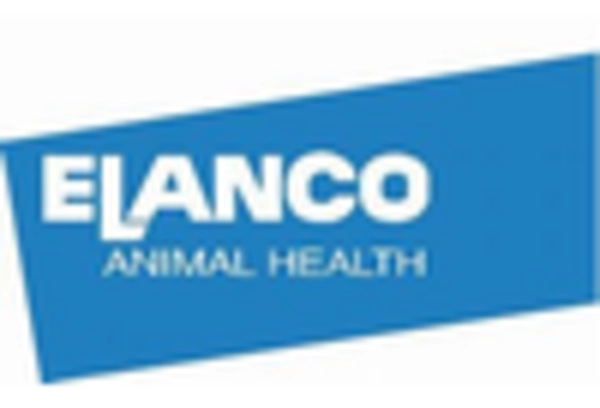Rising Demand for Poultry Products
The increasing The Poultry Health Animal Disease Diagnostic Genetics Industry. As consumers seek affordable and protein-rich food sources, poultry remains a preferred choice. This trend necessitates enhanced health management practices to ensure the quality and safety of poultry products. Consequently, the demand for advanced diagnostic genetics solutions is expected to grow, as these technologies help in early disease detection and management. The market for poultry diagnostics is projected to reach substantial figures, with estimates suggesting a growth rate of around 7% annually. This growth underscores the critical role of genetic diagnostics in maintaining poultry health and productivity, thereby supporting the overall poultry industry.
Increased Awareness of Animal Welfare
There is a growing awareness regarding animal welfare, which is influencing the Poultry Health Animal Disease Diagnostic Genetics Market. Consumers are increasingly concerned about the conditions in which poultry are raised, leading to a demand for higher welfare standards. This shift in consumer preferences is prompting poultry producers to adopt more stringent health management practices, including the implementation of genetic testing to ensure the health and well-being of their flocks. As a result, the market for diagnostic genetics is likely to expand, as producers seek tools to monitor and improve animal health. The emphasis on welfare not only enhances the quality of poultry products but also aligns with regulatory requirements, further driving the adoption of advanced diagnostic solutions.
Technological Innovations in Diagnostics
Technological advancements in diagnostic tools are significantly impacting the Poultry Health Animal Disease Diagnostic Genetics Market. Innovations such as next-generation sequencing and real-time PCR are enhancing the accuracy and speed of disease detection in poultry. These technologies enable rapid identification of pathogens, which is crucial for effective disease management and control. The market is witnessing a surge in the adoption of these advanced diagnostic methods, as they provide poultry producers with the ability to respond swiftly to health challenges. Furthermore, the integration of artificial intelligence in diagnostic processes is expected to revolutionize the industry, offering predictive analytics that can foresee potential outbreaks. This technological evolution is likely to propel the market forward, as producers increasingly rely on sophisticated tools to safeguard poultry health.
Regulatory Support for Disease Management
Regulatory frameworks aimed at improving animal health are playing a pivotal role in shaping the Poultry Health Animal Disease Diagnostic Genetics Market. Governments and health organizations are implementing stringent regulations to control poultry diseases, which necessitates the use of advanced diagnostic tools. Compliance with these regulations often requires poultry producers to invest in genetic testing and disease management solutions. As a result, the market for diagnostic genetics is expected to expand, driven by the need for compliance and the desire to maintain high health standards. The support from regulatory bodies not only encourages the adoption of innovative diagnostic technologies but also fosters collaboration between industry stakeholders, further enhancing the overall health management landscape in poultry.
Growing Investment in Research and Development
Investment in research and development is a key driver of the Poultry Health Animal Disease Diagnostic Genetics Market. As the poultry sector faces challenges such as emerging diseases and changing consumer demands, there is a pressing need for innovative solutions. Increased funding from both public and private sectors is facilitating the development of advanced diagnostic tools and genetic testing methods. This investment is crucial for enhancing disease detection capabilities and improving overall poultry health management. The market is likely to benefit from ongoing research initiatives that focus on understanding poultry diseases at a genetic level, leading to the creation of more effective diagnostic solutions. As R&D continues to advance, it is expected to yield significant improvements in the health and productivity of poultry, thereby driving market growth.


















Leave a Comment